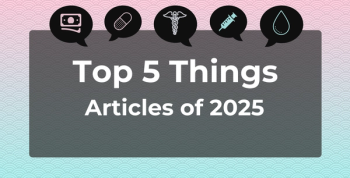
2025 Nobel Prize in Medicine Honors Discoveries Behind Regulatory T Cells
Key Takeaways
- Sakaguchi's 1995 discovery of regulatory T cells revealed a complex immune tolerance system beyond central tolerance.
- Brunkow and Ramsdell identified the Foxp3 gene mutation in 2001, linking it to autoimmune diseases and IPEX syndrome.
Three researchers received the 2025 Nobel Prize in Physiology or Medicine for discovering regulatory T cells and the Foxp3 gene, which revealed how the immune system prevents autoimmune disease.
Shimon Sakaguchi, MD, PhD; Mary E. Brunkow, PhD; and Fred Ramsdell, PhD, were
Specifically, Brunkow, senior program manager at the Institute for Systems Biology; Ramsdell, scientific advisor at Sonoma Biotherapeutics; and Sakaguchi, distinguished professor at Osaka University’s Immunology Frontier Research Center, were recognized for their work identifying regulatory T cells, the immune system’s "security guards" that prevent immune cells from attacking the body's own tissues. For their achievements, they will share a prize of 11 million Swedish kroner, or approximately $1.17 million.
“Their discoveries have been decisive for our understanding of how the immune system functions and why we do not all develop serious autoimmune diseases,” Olle Kämpe, chair of the Nobel Committee, said in a news release.
Their research spans 3 decades, beginning with Sakaguchi’s
Using a specific marker for regulatory T cells, Sakaguchi and his colleagues demonstrated that mice lacking these cells developed autoimmune conditions affecting the pancreas, thyroid, and other organs. This breakthrough
Building upon this foundation, Brunkow and Ramsdell
Sakaguchi and his colleagues
According to the Nobel Committee, the combined discoveries of Sakaguchi, Brunkow, and Ramsdell established the field of peripheral tolerance and paved the way for the development of new treatments for cancer and autoimmune diseases1; several of these treatments are now undergoing clinical trials.
This is the first of 6 Nobel Prizes to be
References
- The Nobel Prize in Physiology or Medicine 2025. News release. The Nobel Assembly at Karolinska Instituet. October 6, 2025. Accessed October 6, 2025.
https://www.nobelprize.org/prizes/medicine/2025/press-release/ - Sakaguchi S, Sakaguchi N, Asano M, Itoh M, Toda M. Immunologic self-tolerance maintained by activated T cells expressing IL-2 receptor alpha-chains (CD25). Breakdown of a single mechanism of self-tolerance causes various autoimmune diseases. J Immunol. 1995;155(3):1151-1164.
- Naddaf M. Medicine Nobel goes to scientists who revealed secrets of immune system “regulation.” Nature. October 6, 2025. Accessed October 6, 2025.
https://www.nature.com/articles/d41586-025-03193-3 - Brunkow ME, Jeffery EW, Hjerrild KA, et al. Disruption of a new forkhead/winged-helix protein, scurfin, results in the fatal lymphoproliferative disorder of the scurfy mouse. Nat Genet. 2001;27(1):68-73. doi:10.1038/83784
- Wildin RS, Ramsdell F, Peake J, et al. X-linked neonatal diabetes mellitus, enteropathy and endocrinopathy syndrome is the human equivalent of mouse scurfy. Nat Genet. 2001;27(1):18-20. doi:10.1038/83707
- Hori S, Nomura T, Sakaguchi S. Control of regulatory T cell development by the transcription factor Foxp3. Science. 2003;299(5609):1057-1061. doi:10.1126/science.1079490
- Watkins A. Nobel Prize in Physiology or Medicine is awarded for work on immune systems. New York Times. October 6, 2025. Accessed October 6, 2025.
https://www.nytimes.com/2025/10/06/health/nobel-prize-medicine-physiology.html
Newsletter
Stay ahead of policy, cost, and value—subscribe to AJMC for expert insights at the intersection of clinical care and health economics.







































